As a qualified ECB cricket coach one thing that I frequently mention on courses is the phrase, "The hardest thing about cricket is keeping it simple." In many ways the same applies to gull identification. You can make it as hard as you like, trying to identify a 2nd year or 3rd year Herring gull. Even experts come unstuck with some identifications so this guide looks at the ADULT breeding and non breeding plumages of our common gulls, the species found locally on a regular basis.
It really is not too tricky once the beginner has a basic grasp of the key features of each species. Top tip is to get out with a pair of bins and study a flock of gulls and immediately it can be seen that there are glaring differences in leg colour, mantle colour, size and bill shape and colour.
Few phrases that are helpful for identifying gulls:
Saddle: This is the area made up of the mantle (area behind the head) and the scapulars, the wing feathers closest to the body. In all gulls in this guide, the saddle is somewhere on the grey scale. This colouring is measured on the Kodak Scale, where virtually white is Kodak 1 and almost jet black is Kodak 10. A standard summer plumaged Herring gull is Kodak 5 just for reference.
Mirrors: When the wings are folded back or in flight, species show white areas at the end of the wing feathers (the primaries.)These white areas are called mirrors and can be useful in identification.
Orbital eye ring: A circle of colour around the eye.
Basically, there are 5 common species of gull: Black headed, Herring, Lesser black backed, Greater black backed and Common. Also others that are possible at certain times of year are Kittiwake, Mediterranean, Little, Yellow legged, Iceland and Glaucous. The last two are often referred to as "white wingers" for obvious reasons. The taxonomic names for gulls are all a little mixed with Larus glaucoides being Iceland, whilst common names are also misleading as the Black headed gull is brown headed in breeding plumage, and the Mediterranean gull can be found in Norfolk.
Copyright prevents me from adding a diagram showing the topography of gulls but do take a look here, scroll down a little for a set of useful diagrams.
Gulls of the World: A Photographic Guide: A Gull Book Review - 10,000 Birds
Anyway, enough of the "complicated stuff."
Black headed Gull (Larus ribibundus)
The smallest of our common gulls and fairly easy to pick out in any flock of mixed gulls. A bright red bill and bright red legs is enough to secure the id in almost all cases. (See Mediterranean gull)
Non breeding plumage:
A light shade of grey on the saddle, red bare parts and several darker dots behind the eye. As the bird moults towards breeding plumage these dots begin to expand into 2 darker head stripes before increasing in size. Wing tips are black. The head , breast and belly are white as is the leading edge of the wings.
Below are all examples of BHG in winter/non breeding plumage. Note the white edges to the wings in photo 3 and 5 and the variation of head patterning with the dark spots and stripes. Note also in photos 4,5 and 6 the black ends to the primary feathers when in flight. All photos taken in the UK either locally (Amwell, Southern Country Park, Grange Paddocks or Norfolk and Dungeness)
Also, note in photos 4 and 5 the very tidy and immaculately white tail.
Breeding plumage:
Easy enough, really. The same as non breeding plumage apart from the moult into an immaculate chocolate brown head and slightly darker red of bill and legs.
Photo 1 here shows a bird not fully moulted into full breeding plumage, unlike photos 2 and 3. Final photo shows that the remaining plumage is as before, White edges to wings, white tail and black ends to primary feathers. Adult gulls can vary as to when they take on breeding plumage but it is usually between January and March, with some variation. The head colour is known as the hood. Note also that there is a semi circle of white around the eye in full breeding plumage as seen in photo 2.
Moulting adults:
Photo above shows the transition from non breeding (centre bird) towards breeding (back bird) to the whole set of characteristics for breeding plumage (foreground bird.)
The BHG is into adult plumage after a year as 1st winter bird. Here there are variations that are easy to pick out whilst still remaining clearly a BHG. Note the more orange tones to the bill, also showing a black tip. In flight, 1st year BHG have a black band at the end of the tail and also show the brown markings on back and wings as shown here. Basically the more brown the younger the bird is. The last two photos, from Bishop's Stortford show 1st year bird characteristics: black band on tail and brown feathers on the wing
Gulls are well known wanderers as illustrated here with a bird I encountered in Southern Country Park in 2019. Not only did it show a deformed beak but it showed a metal ring which I was able to photograph well enough to be able to read the detail. Clearly, a bird ringed in Kaunas, Lithuania, an adult in none breeding plumage. Even with the deformed or broken bill, the state of the plumage showed that it was a healthy bird, feeding properly.
Finally, a couple of close ups of the head and bill from a bird at Brancaster harbour, North Norfolk that was a tad peeved as I was unwilling to share my lunch with it. Note, sexes are identical in almost all gull species and can only be safely identified to sex in the hand.
Final recap: take a look at this photo from Amwell (Dec 2020) to see plumage details of non breeding adults.
Common Gull (Larus canus)
Another inappropriate name as frequently the Common gull is the least common of the top 5 species!
Non Breeding/Winter Adults.
A grey saddle somewhere around Kodak 4. Shows a yellow bill with invariably a black band running vertically across the bill. Legs are light coloured, yellowy/green shades. The ends of the primary feathers on the wings are substantially more black than in BHG and also show a large mirror on the tip along with 2-3 smaller mirrors on the trailing edge of the wings. The head predominantly white with variable amounts of brown mottling.
All details are shown in this photo: subterminal bar on bill which is a light shade, as are legs and note the mirror on the end of the dark tipped wings. Another example below.
Breeding plumage
The Common gull loses the mottled head when in breeding plumage and the bill and legs become a brighter yellow or green. Another feature of this gull is just how rounded the head is compared to other species. Whilst seeming like a small detail, in the field it can be very distinct as shown here in near silhouette from Jastarnia, Gdansk Bay, Poland.
Note the flatter head of the 2 BHGs compared to the round shape of the Common gull in the foreground.
The Common gull doesn't reach adult plumage until its 3rd year. In year 1 after juvenile plumage which is all brown the 1st winter bird is a mix of brown with a Kodak 4 grey mantle and no mirrors. a 2nd winter example is really just a more adult plumage than year 1 with the whole of the wings and saddle grey but showing a mottled brown head. 1st year bird and juvenile show pink legs and a pink bill which becomes green in year 2.
Below a couple more shots showing how a Common gull stands out in a flock of BHG. Photos again from Gdansk, Poland. In photo 1 note the subtle variations in the colour of bill and legs on the BHGs. Photo 1 is very similar to the gulls lining up on the boardwalk at Southern Country Park.
Herring Gull (Larus argentus)
The Herring gull, is many cases, the default gull to go to and then pick out the key features to guarantee it is indeed Herring. A larger bird than the Common and one that has a 3 year plumage changes before reaching adulthood in year 4 or even Year 5. For that reason, with so many variables, I won't dwell on the complexities here and just look at breeding and non breeding adults.
Non Breeding:
Saddle is Kodak 5 and shows clearly pink legs and a bright yellow bill, invariably containing a red spot on the lower mandible near to the tip which may also show dark markings, rather smudged and not well defined.
The wing ends, when folded at rest are black and show three clearly defined mirrors before a clear white area at the very tip. In flight these mirrors are clearly visible with a large white one showing on the tip and leading edge of the first feather whilst the others show on the trailing edge. Basically, the larger and brighter these mirrors are, the older the bird is. The Herring adult shows a mottled head in winter plumage. This can vary enormously from very light as in Photos 1 and 3 to a little more as shown in the flight photo to almost totally dark.
Note the mirrors in phots 1 and 2, showing the largest area of white is on the wing tip. Leg colour can be very tricky to note correctly in flight as in shade they can become much darker whilst when wheeling away into the sun they can become a confusingly light. Leg colour best noted when the bird is at roost.
The eye of the Herring gull is worth checking as can be seen in Photo 3, there is a red orbital eye ring which indicates this bird is in transition from 1 moult to another. Photo 1, Poland, Photo 2 Amwell and photo 3 Wells Next the Sea when the fishing boats were coming in. Photo 4 from the splendidly named, Hel on the Gdansk Bay.. This bird has a lot more mottling, the staring eye that looks threatening, compared to the softer facial features of the Common gull.
Breeding plumage:
Basically, as with Common gull, just a brighter version of the winter gear. No mottling on the head, an all white, bright tail, pinker legs and a bright yellow bill and the staring red orbital eye ring. Another issue with getting colour correct is the light. Gulls can appear much darker in poor light and really pale in bright sunlight. All here show that they are either in breeding plumage or moulting towards it. In photo 3 head still shows light mottling as does the one standing on the post at Amwell. Note the darker coloured bird flying behind. A Lesser black backed, identified by the saddle darkness and also the mirror pattern
Final photo clearly shows pink leg colouration.
Remember, many gulls migrate to breed around the Baltic area, so seeing them in full breeding plumage maybe unusual. By the time they return to their winter quarters they will already have moulted. However, as from late May/June it is possible to catch up with birds still in breeding plumage if, a.) they are breeding locally, such as those that do so on the roof of The Range in Harlow near Tescos or b.) they have returned early from breeding quarters due to failed breeding attempts, predation or just not finding a mate.
Below, a few photos, without details of birds in a variation of winter plumage as juveniles through to 3rd winter birds. Again, Polish and Amwell birds shown here.
PS: I have omitted to mention the fact that different areas have different herring gulls! Larus argentus and also Larus argentatus. Basically, UK birds are the former. Mind mangling.
Lesser Black Backed Gull (Larus graellsii)
The Lesser Black backed gull is roughly the same size as a Herring gull but shows a much darker saddle, around Kodak 7 - 8 with exceptional birds muddying the water by being lighter at Kodak 6! Features of the adult bird in both sets of plumage are yellow legs
Non breeding/winter plumage:
Put simply, a darker version of the Herring gull. Yellow legs apart, there is mottling around the head and neck which can be variable and a lot less showy mirrors on the wing ends. The bird shows a smaller mirror on the wing tip itself followed by up to 4 smaller mirrors on the trailing edge of the primary feathers. The tail is all white in adult birds whilst there will be a black terminal band from juvenile to 3rd winter youngsters, fading in the 3rd year examples.
All photos below from Amwell last week showing several different LBBGs. Note the variation in saddle colouring as well as the differences in the mottling around the head. Photo 3 looks more closely at the mirrors whilst at rest. Note the bill in Photo 2 shows a red spot but no smudgy markings as frequently found on Herring gull
Photo 1 here shows a well marked winter plumage head example and much darker wings than the example above. Photo 4 highlights the yellow legs whilst the other 2 snaps show the mirrors when the wings are fully extended.
Breeding plumage:
Once again, the breeding plumage is just a brighter, smarter form of the winter version. Pure white head, a red orbital eye ring and tidy dark saddle. The right hand bird above is almost an example of this state. For good examples: Tescos car park in Harlow!! A flight shot here showing the clean lines and overall smart white body.
Again, I have not gone on about the 3 sub species: Larus fuscus, Larus graellsii and, just to add confusion, Larus intermedius! L. graellsii is the regular UK bird but dedicated gull watchers always check for the other sub species. Not recommended lol!
Great Black Backed Gull (Larus marinus)
An absolute beast of a bird and often its sheer size and bulk will make ID easy enough if seen with other gulls nearby. Basically, a large version of LBBG with the saddle being up to Kodak 9. Adult birds in both phases of moult show pink legs, a huge yellow bill with red spot and the wing tips almost entirely white as it shows a large mirror.
Non breeding plumage:
Photo 2 below clearly shows the mirror on the end of the primary feathers whilst photo1 and 3 depict a 3rd winter bird moulting into its first adult plumage. Note the darker terminal band on this birds tail compared to the centre photo of the full adult. Photos from Dungeness, a gull hotspot. Note also the sloping forehead and beady eye
Breeding plumage:
Again, a darker, smarter version of the winter get up and in many cases, hardly any noticeable difference. A red orbital eye ring can appear but the eye always looks small in comparison to the size of the head. Smart breeding plumaged GBBG below from Dungeness RSPB Reserve.
2nd and 3rd photo taken from Dungeness beach on a very stormy day with winds howling around at 80mph and I was blown off my feet. Gulls still flying perfectly competently. In both, an adult summer GBBG and in one a juv/1st year LBBG. In the final photo the mirror on the primary wing tips is clearly visible.

















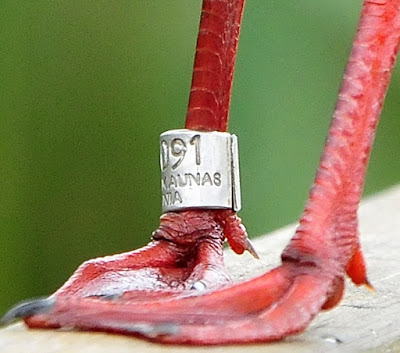





































































































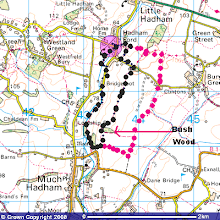
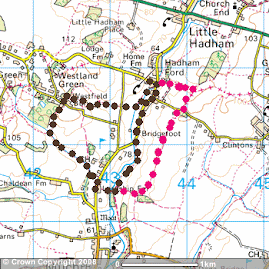
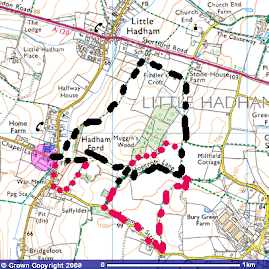
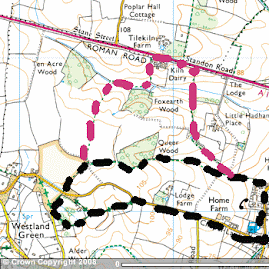
No comments:
Post a Comment